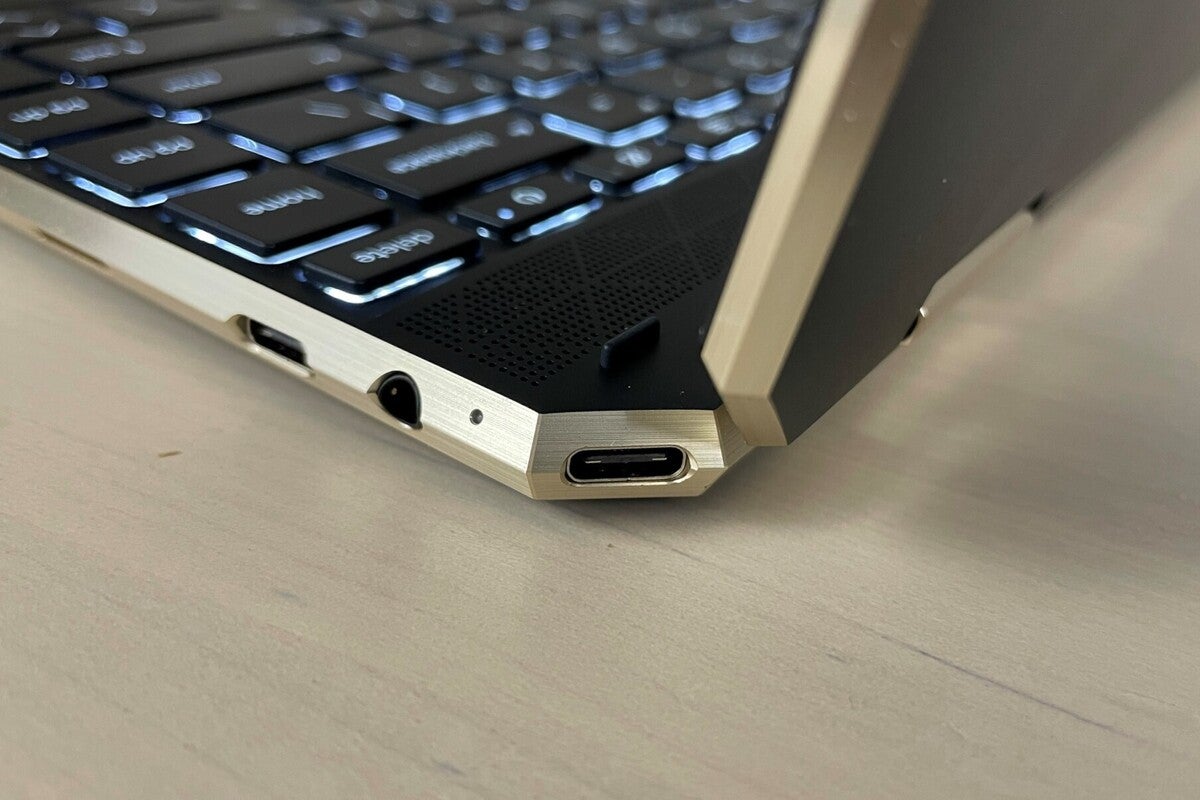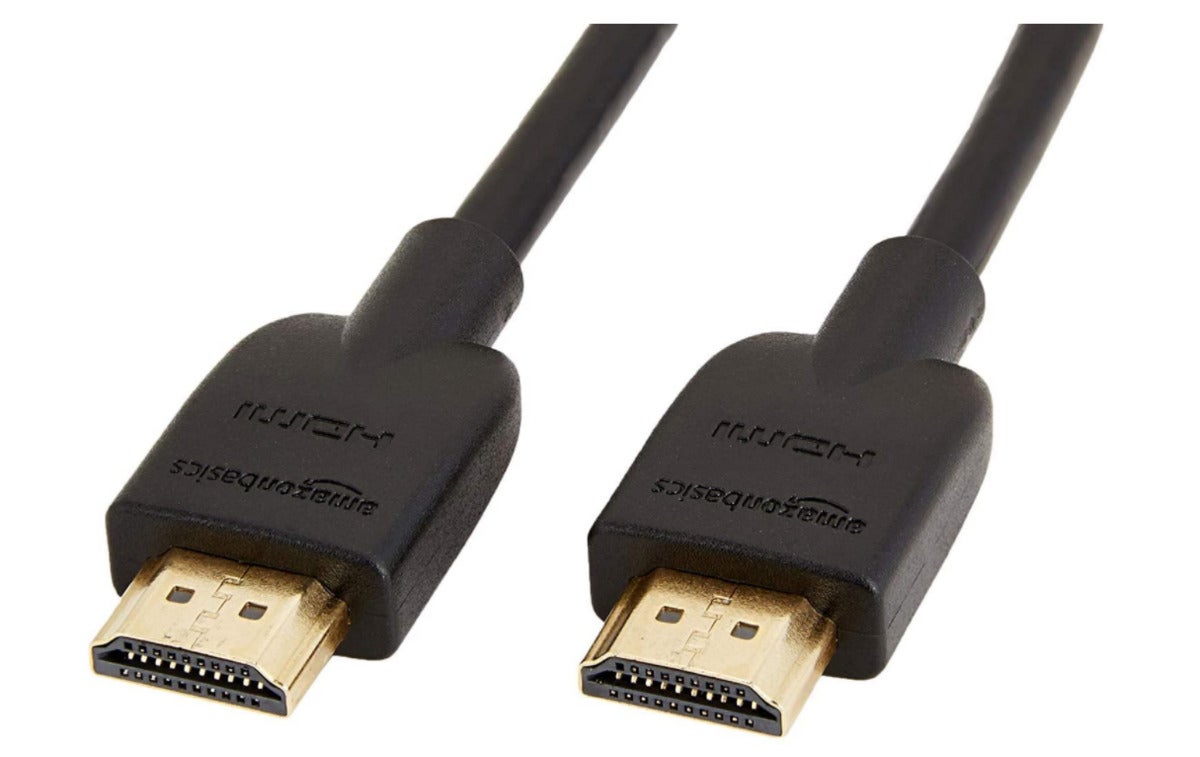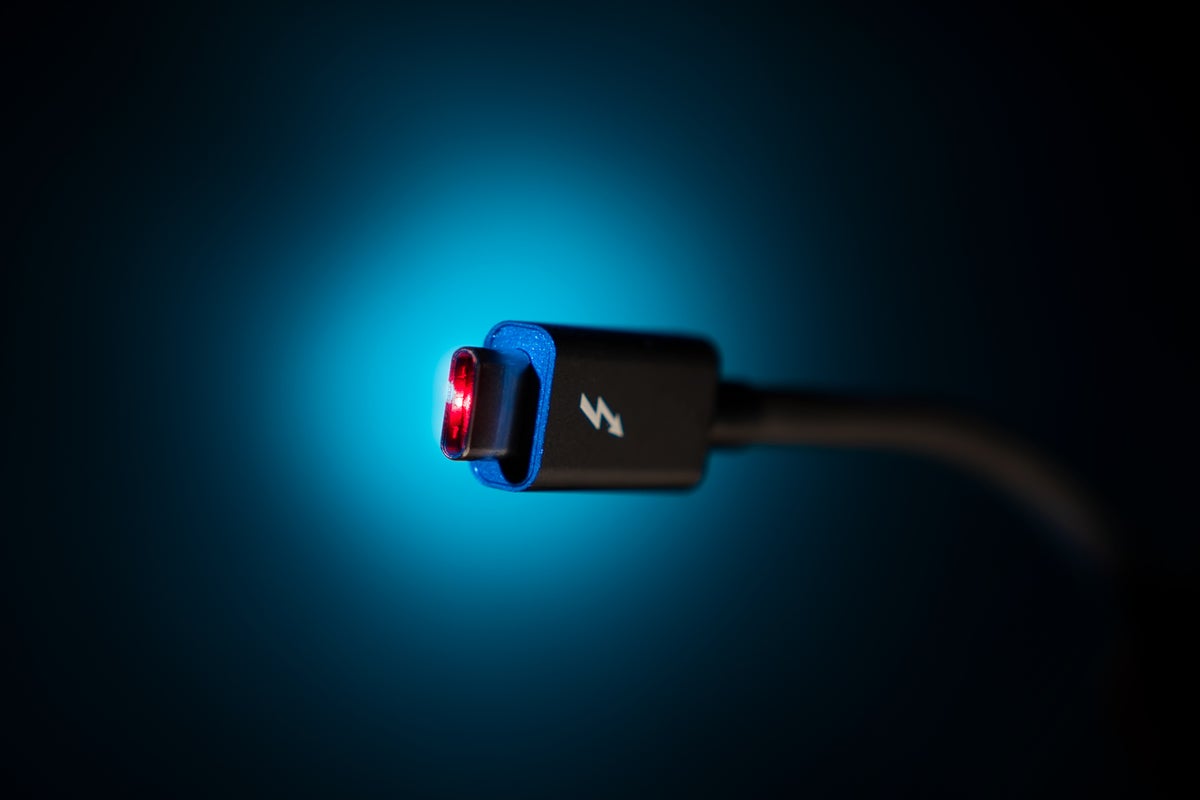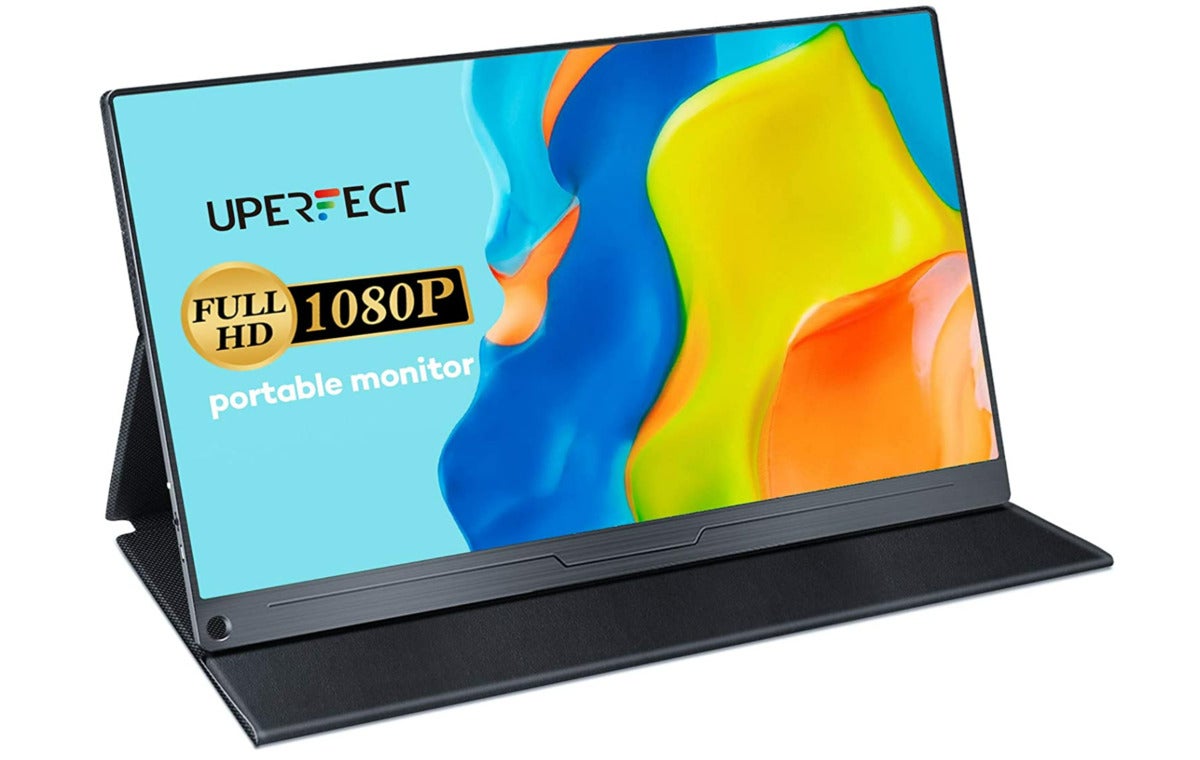Do you need a Thunderbolt display? Pros, cons, and what to buy - mendozaonfor1968
Should you buy a Thunderbolt display? The inquiry is coming prepared more often these days, as more PC laptops appear with a Thunderbolt embrasure. You might also be wondering whether a Thunderbolt port requires that you use a Thunderbolt display. It doesn't.
But if you have a Thunderbolt port, you do want to subscribe advantage of its umpteen benefits—not just for displays, but for high-speed connectivity and charging likewise. Spell a Thunderbolt display may not be your first or best priority, we help you decide away walking through the pros and cons, and some PC-compatible monitors you can corrupt on Amazon.
What is Thunderclap?
Thunderbolt is an advanced connectivity standard, developed aside Intel and first launched in 2011. (Thunderbolt has been on Apple products, nearly notably the MacBook Pro, since 2013.) It uses the USB-C physical interface for connecting and powering I/O devices, displays, peripherals, you name it—including DisplayPort displays running over the Bolt of lightning cable.
While USB-C maxes out at 20Gbps transfer rate (and arse't forever deliver king), Thunderbolt communicates adequate 40Gbps directly to a monitor. That's more than enough bandwidth to handle the demands of two 4K displays running at 60Hz, which is one of the format's compelling advantages. Because IT can manage power and data signals on the same cable, Thunderbolt also simplifies setup and allows daisy-chaining of a laptop computer or second monitor.
Thomas More recitation
- The best Thunderbolt docks you can buy for your laptop computer PC
- Intel unveils the Thunderbolt 4 specification, which AMD believes it can use
- Why Asus just made the first Thunderbolt 4 motherboard for Ryzen CPUs
Thinner laptops tend to shed legacy ports, so another consumption for a Thunderbolt port is to connect a Thunderbolt dock. It offers plenty of bandwidth to keep using your old USB Florida key drives, OR to connect a display via HDMI or DisplayPort if your dock includes them.
As mentioned preceding, Thunderbolt displays have existed mostly for the Mac market up to now, and A a solvent they still tend to be valuable. Your best reasonableness for getting one immediately is for future-proofing, as we discuss further below.
 Ben Patterson/IDG
Ben Patterson/IDG Thunderbolt is becoming increasingly common on PCs—but what ISN't shared is a consistent labeling outline. Consult your PC's owner's manual to see whether it includes Thunderbolt support.
Pros: A clean, simple investing in the future
A big part of Bolt's appeal is its clean cabling solution, which requires just one cable out from your PC for both power and data. A Bombshell-enabled display often likewise serves as a USB hub.
Two other exhibit connections compete with Thunderbolt: HDMI (used primarily for TVs and general-purpose PCs) and DisplayPort (chiefly for PC, especially gaming PCs). Some are video-simply connections, and they can't deliver power—that requires a separate cable. That's another persuasive argument for investment in Thunderbolt as "one cable to normal them entirely."
Thunderbolt cables, like the USB-C cables on which they'Ra supported, have another big plus: They're reversible, flexible, and easy to plug in. If you've ever fumbled around the posterior of a display, trying to blindly nag in a cable by touch, you'll appreciate how Thunderbolt (and USB-C) uses a two-sided association.
 Amazon
Amazon How do you know whether this cable supports 4K/60 displays? You Don't. (And it doesn't.) That's one vantage of Thunderbolt cabling.
Clarity is another Thunderbolt advantage. With competing standards such as HDMI, you must check carefully to make a point your cable is compatible with your port, or you danger losing bandwidth to the limitations of an older-standard cablegram. Thunderbolt cables are understandably labeled with both the Thunderclap lightning-bolt ikon and a number ('3' OR '4') at the conclusion of the cable.
Cons: Pricey and relatively unavailable
The biggest problem with Thunderbolt displays is that nigh are expensive. LG, for instance, tends to reserve Thunderbolt for its higher-end, premium displays, like the LG34BK95U widescreen 5K displayRemove non-product link, which is priced at about $1,200. The bulk are priced at about $500 and ahead. We did find a hardly a exceptions, which we've listed in our "What to bribe" section below.
 Intel
Intel Bolt cables (which typically don't include an LED) are available to insert, just they don't handle jiggling all that good.
In my personal experience, Thunderbolt connections can also be finicky. Simply adjusting the position of a Thunderbolt-equipped laptop on a desk posterior sometimes disconnect the signal. Will the Lapp affair chance when you lower, argument, or pivot a Thunderclap display? I too make concerns about Thunderbolt connectors wearing descending over time, just like USB-C connectors do on phones. (The latter has precondition ME a unexampled appreciation for wireless charging.)
You'll pay more for cables, too. The current Price of Thunderbolt cables tends to be or so two to four times that of an HDMI cable of siamese distance. For representativ, this Anker 2.3-substructure Thunderclap 3 cable's length is $32 on AmazonBump off non-product unite, compared to Anker's 6-substructure HDMI 2.1 cable for just $20 along AmazonRemove non-product link up.
Note that current, copper-based Thunderbolt 3 cables experience signal degradation. While the spec allows for a cable up to three meters unsound, the maximum 40Gbps bandwidth is guaranteed simply in cables up to two meters long. Optical Thunderbolt cables anticipat to remove this restriction.
Speech production of bandwidth, Thunderbolt 3 (as well equally Thunderbolt 4) whitethorn exist falling behind. It offers 40Gbps, enough for a pair of 4K displays or a single 5K (5120×2800) display at 60Hz. Only HDMI 2.1 offers 48Gbps, adequate for a 5K/60 monitor or 10K/60 video display victimization Display Rain bucket Compression (DSC). HDMI 2.1 besides promises a VESA-compatible version of the variable-rate engineering science misused in FreeSync and G-Synchronise, famous as VRR. DisplayPort 2.0-compatible displays will offer a theoretical maximum of 80Gbps, with up to a pair of 8K displays at 120Hz using DSC.
Thunderbolt displays: What to buy
For all of Thunderbolt's appeal, there's a decided lack of Thunderbolt displays. On Amazon, you'll find out a varlet or two of Thunderbolt-well-found displays. On closer inspection, they tend to fall under deuce categories: traditional desktop, and travel-turkey-sized.
Screen background PC displays seem to come mostly from LG, and to a little extent, Samsung. Most of the models declare oneself Thunderbolt on with traditional HDMI and DisplayPort connections, covering every last bases.
The Nixeus Vue 27-edge in 1440p IPS monitorRemove non-product join ($293) and the Viewsonic VG2455-2k 24-inch 1440pRemove not-product link display ($289.99) are valuable considering. What's attractive about both of these displays is that they're middling priced, in the ballpark of similar 1440p PC monitors.
Go off monitors may offer Thunderbolt and nothing else—and appear to pop the question the best bang for charge for this interface. These portable monitors close up down same a tablet, with a kickstand. In the knightly, most of these have been crummy 1080p displays battery-powered by USB-A Oregon something similar. We're sightedness much take advantage of Thunderbolt's press, high-velocity interface to create a new category of 4K travel displays.
 Amazon
Amazon Thunderbolt could find a rest home inside travel displays the like this one.
Within the category of travel displays, UPERFECT offers a 4K, 15.6-inch travel display with HDR and FreeSync for gaming on the get on—all for $339.99. That's an superior value all the way some, especially if you travel operating theatre anticipate traveling in the near future tense.
Investing for the future
The current lack of Thunderclap-equipped displays is the strongest understanding to forgo a Bolt of lightning display and choose from the hundreds of traditional HDMI and DisplayPort displays instead. The best pricing and accessibility of "traditional" displays means better deals during the holidays and other sale multiplication, too.
Thunderbolt-powered displayscan be a production that's worth investing in, now, but more in all probability will atomic number 4 one that should follow watched as Sir Thomas More manufacturers enter the market and prices fall. Remember, if you own a laptop with Thunderbolt ports, you can still buy a Thunderbolt dock and (if you buy the right one) connect to basically every gimmick and reveal you already own.
Source: https://www.pcworld.com/article/394346/should-you-buy-a-thunderbolt-display-pros-cons-and-what-to-buy.html
Posted by: mendozaonfor1968.blogspot.com


0 Response to "Do you need a Thunderbolt display? Pros, cons, and what to buy - mendozaonfor1968"
Post a Comment